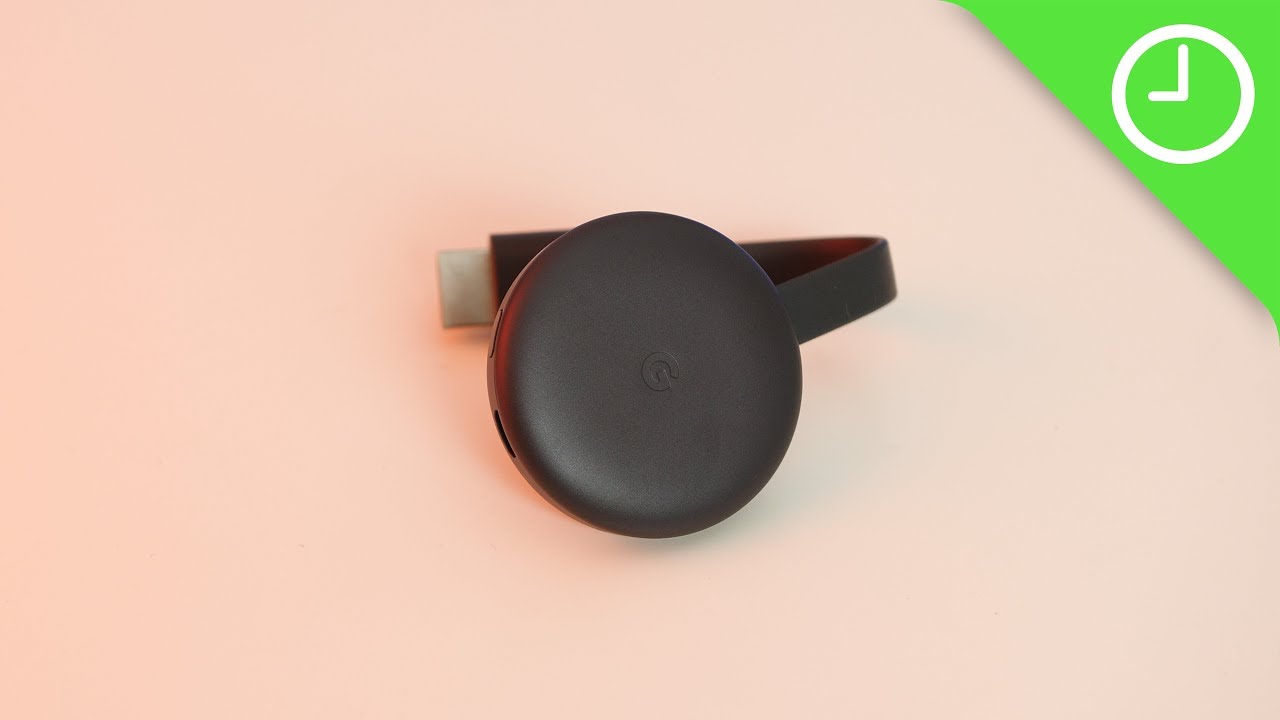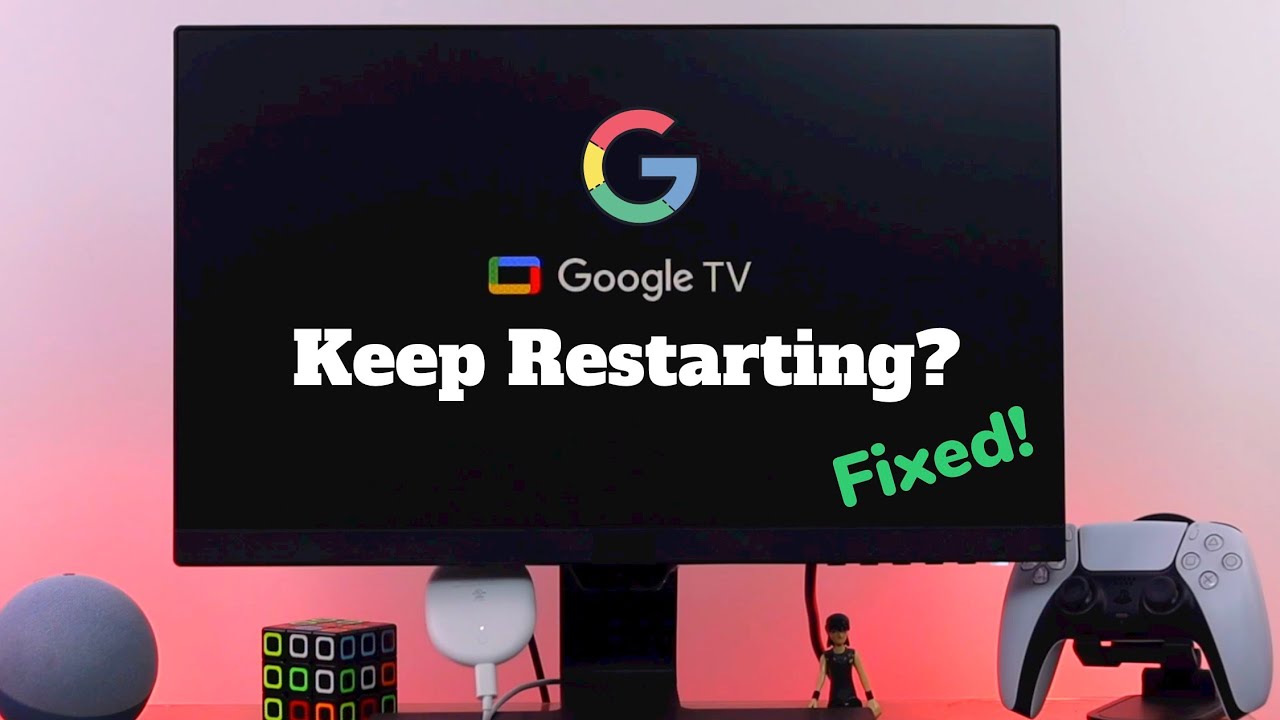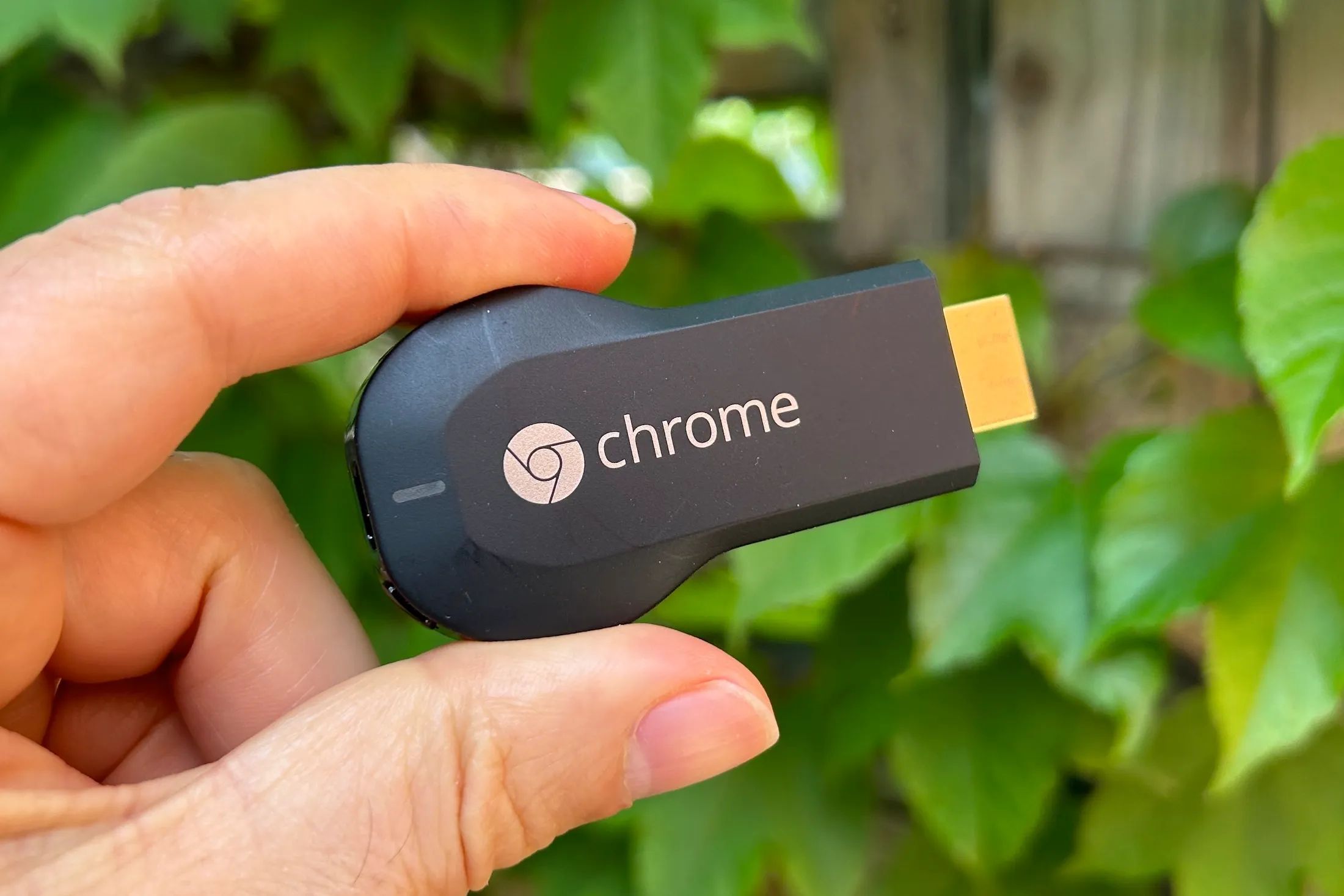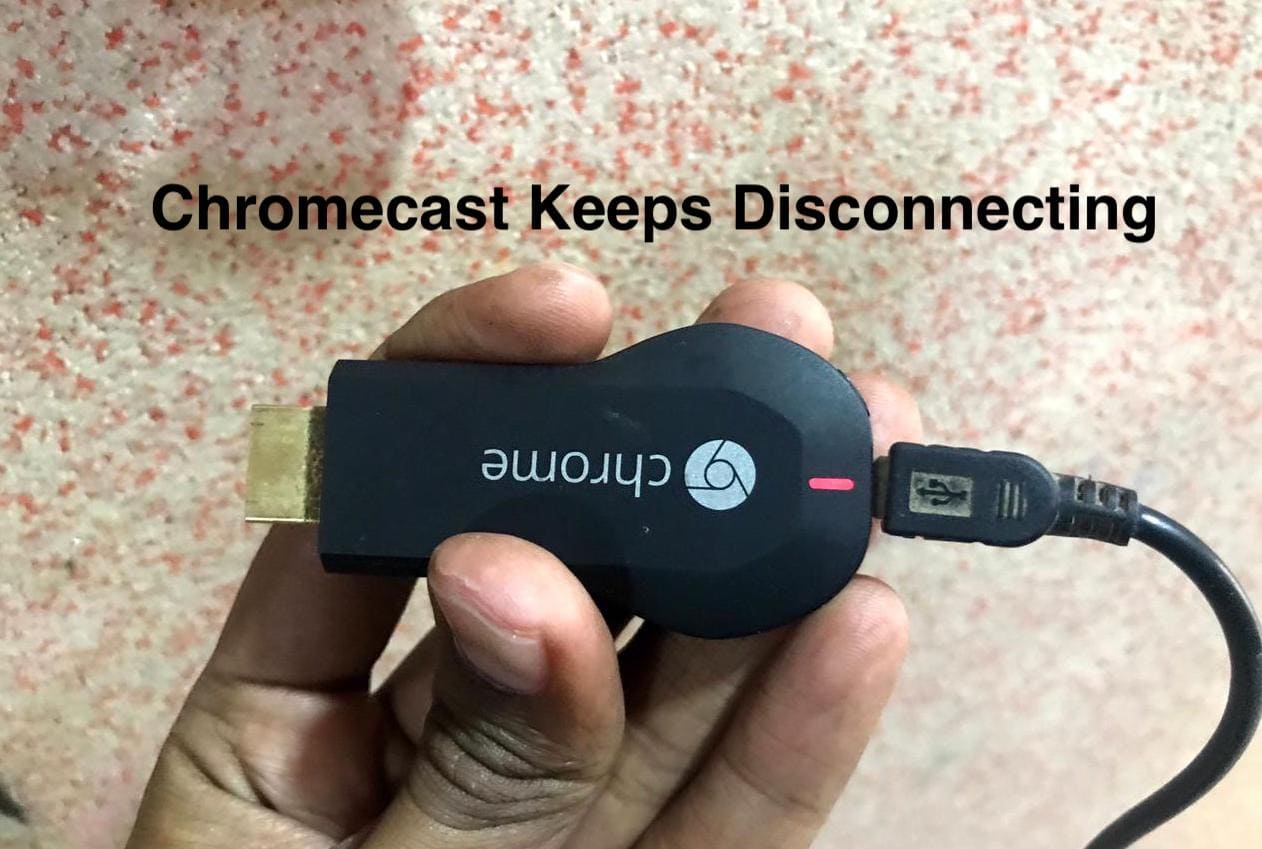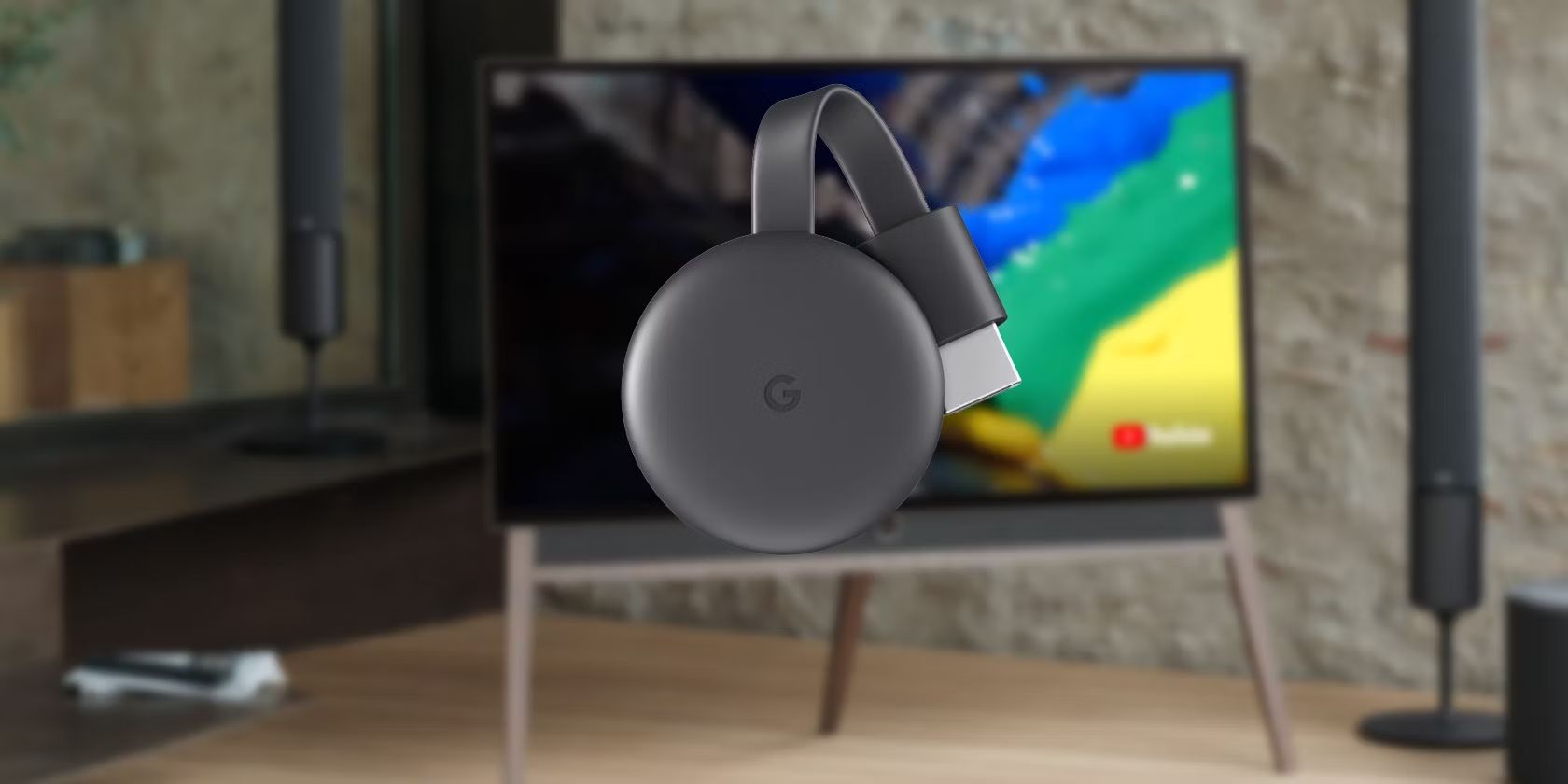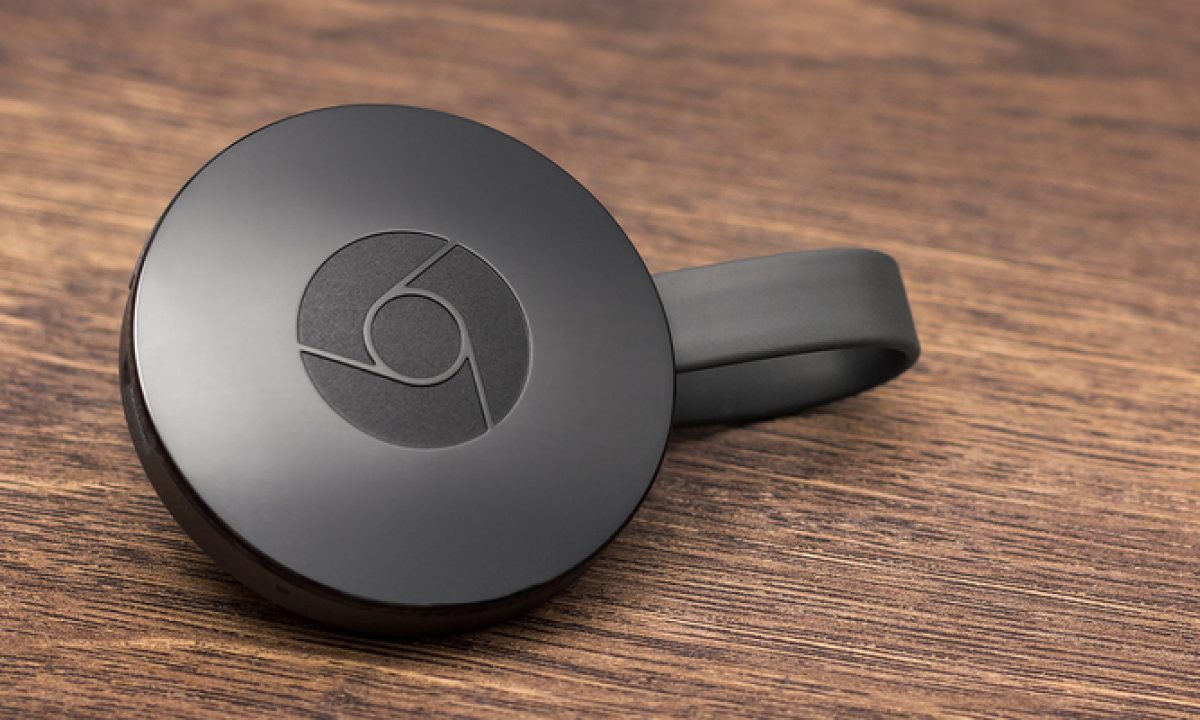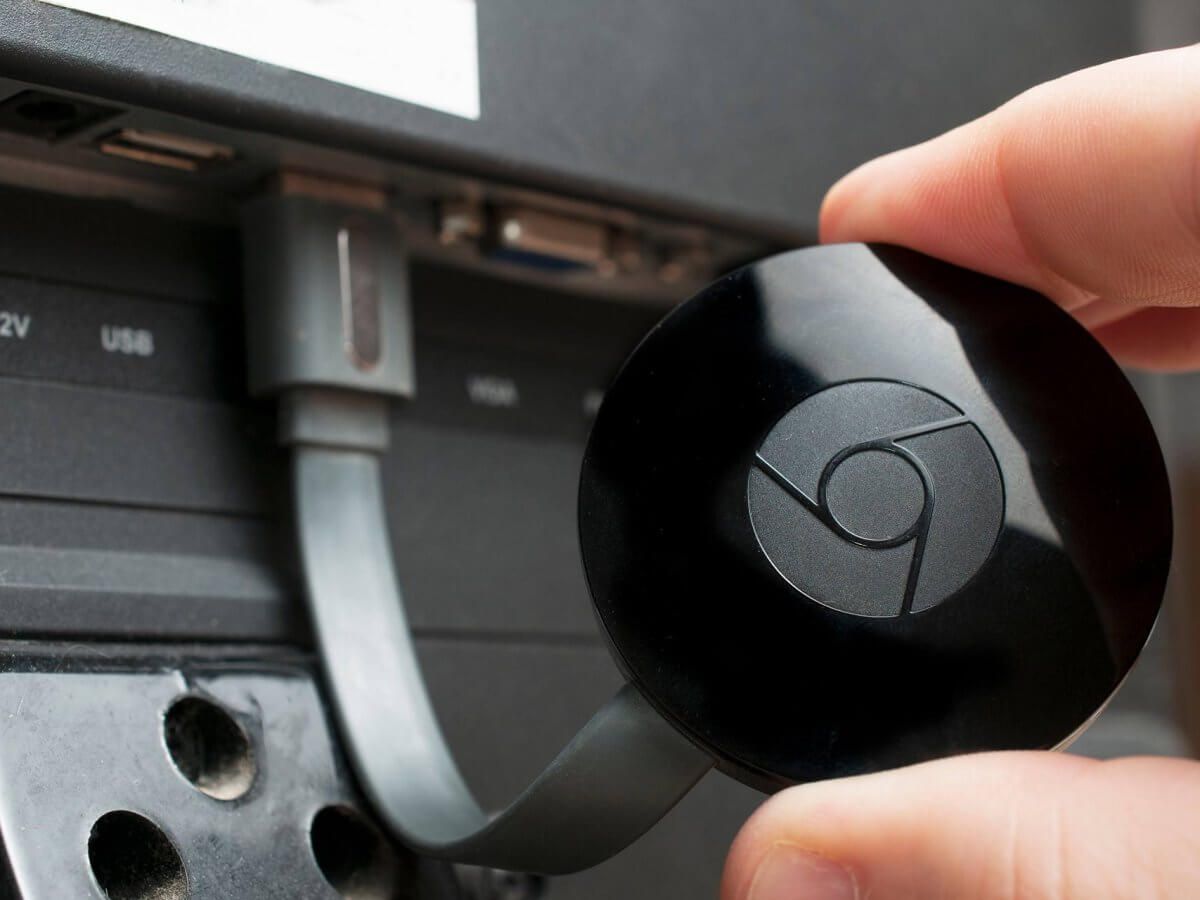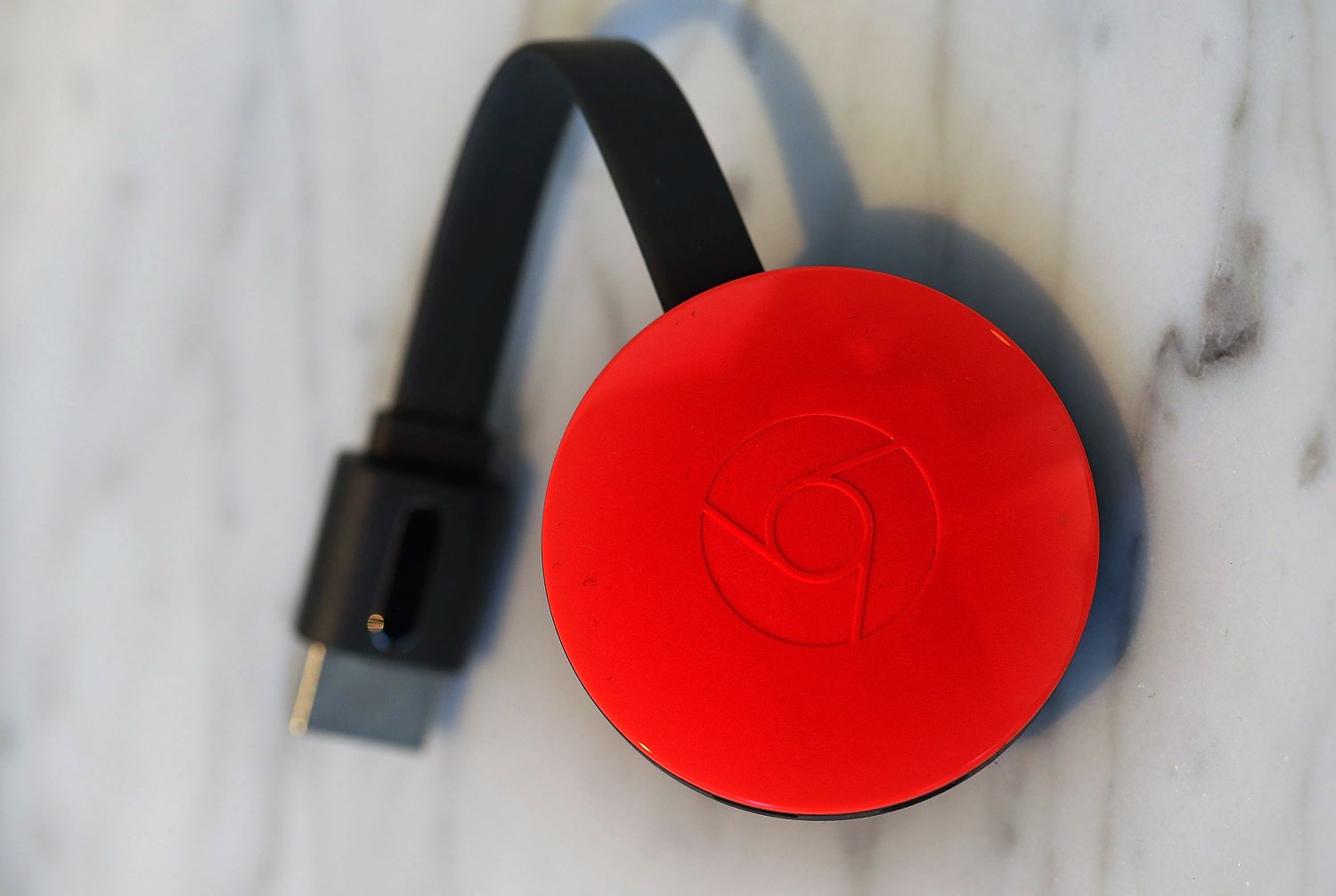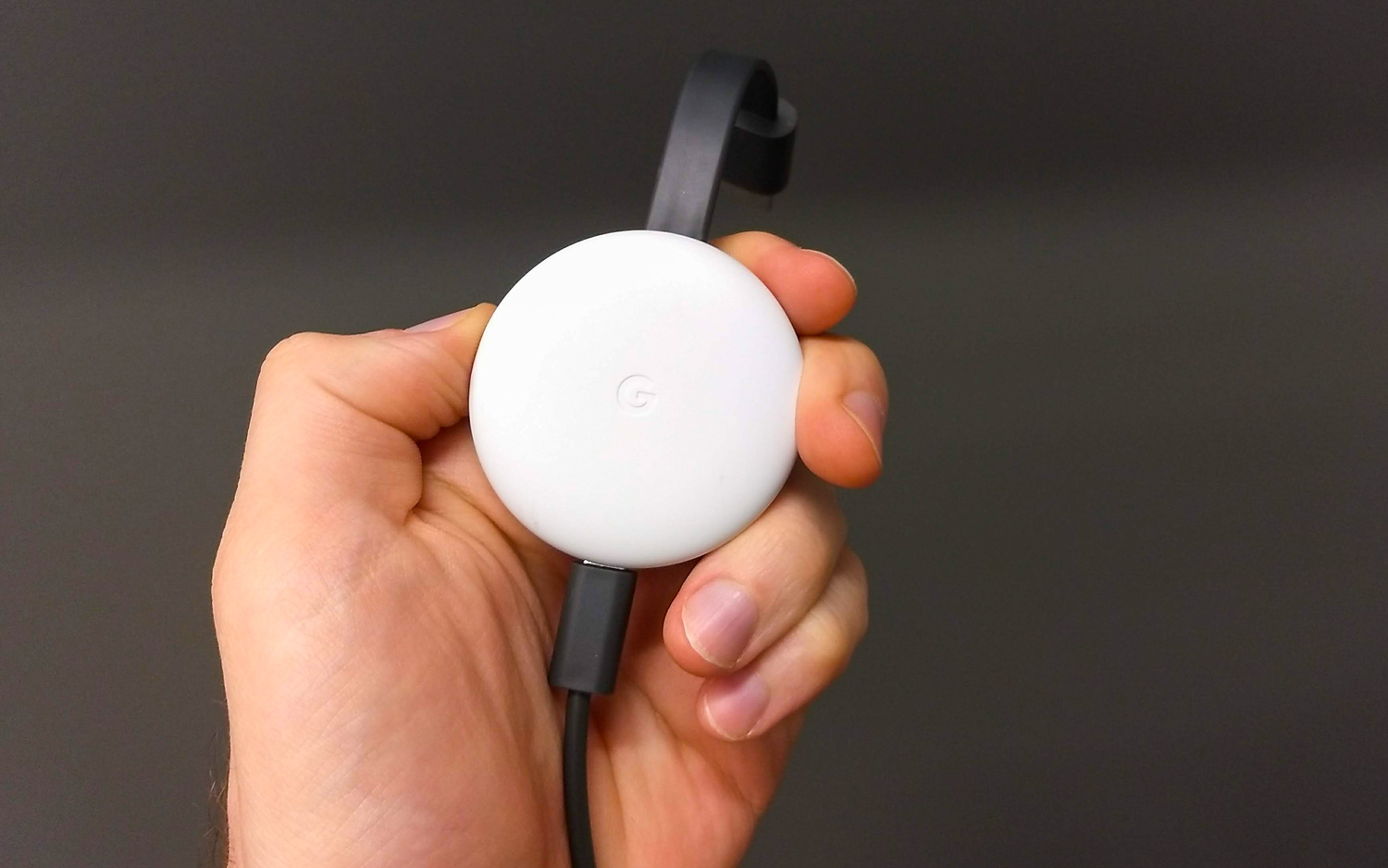Introduction
Welcome to this guide on how to update Chromecast firmware. Chromecast is a popular streaming device developed by Google, allowing users to cast and stream media content from their smartphones, tablets, or computers to their television screens. Firmware updates are essential for Chromecast as they bring new features, improvements, and bug fixes to enhance the overall performance and user experience.
If you own a Chromecast device, keeping the firmware up-to-date is crucial to ensure you have access to the latest features, security patches, and stability enhancements. Updating the firmware on your Chromecast device is a straightforward process that can be done automatically or manually, depending on your preference.
In this guide, we will walk you through the different methods available to update your Chromecast firmware. Whether you prefer an automatic update or a manual update, we will provide you with the step-by-step instructions to ensure your Chromecast is running on the latest firmware version.
It is worth mentioning that updating your Chromecast firmware is not only about getting the latest features but also about fixing any potential issues or vulnerabilities. Google regularly releases firmware updates to address these concerns and improve the overall performance and security aspects of the device. Therefore, it is highly recommended to keep your Chromecast firmware up-to-date to enjoy the best possible streaming experience.
In the following sections, we will cover the different methods you can use to update your Chromecast firmware, including automatic updates, manual updates, and casting a firmware update. Each method is explained in detail, so you can choose the one that suits you best. Let’s dive in and keep your Chromecast device running smoothly with the latest firmware updates!
What is Chromecast Firmware
Chromecast firmware refers to the software that powers the Chromecast device. It is essentially the operating system that runs on the device and controls its functionality. The firmware is responsible for managing the device’s network connections, media streaming, and overall system performance.
When you purchase a new Chromecast device, it comes preloaded with a specific firmware version. However, over time, Google releases firmware updates to improve the device’s capabilities and fix any bugs or security vulnerabilities that may arise. These updates are designed to enhance the overall user experience and ensure that your Chromecast is running smoothly.
The Chromecast firmware updates are typically released by Google and are automatically pushed to the devices connected to the internet. The updates can bring various improvements, including new features, performance enhancements, stability fixes, and security patches.
One of the significant advantages of Chromecast firmware updates is the ability to access the latest streaming apps and services. As new apps and services are developed, Google updates the firmware to ensure compatibility with these platforms. This ensures that you have a wide range of options when it comes to streaming music, movies, TV shows, and other media content.
In addition to app compatibility, firmware updates also address any potential security vulnerabilities that may arise. Cybersecurity threats are continuously evolving, and Google is committed to keeping Chromecast users safe from potential risks. By regularly updating the firmware, you can rest assured that your Chromecast device is protected against any known vulnerabilities.
It’s important to note that firmware updates are separate from software updates on your smartphone, tablet, or computer. While firmware updates are specific to the Chromecast device, software updates on your casting devices are related to the operating system and applications running on them. Therefore, it is crucial to keep both your Chromecast firmware and casting device software up-to-date to ensure the best streaming experience.
In the following sections, we will discuss the reasons why updating Chromecast firmware is important and guide you through the various methods available to perform a firmware update.
Why Update Chromecast Firmware
Keeping your Chromecast firmware up-to-date is essential for several reasons. Let’s explore why updating Chromecast firmware is important:
1. Performance Enhancements: Firmware updates often include performance improvements and optimizations. These updates can enhance the overall speed and responsiveness of your Chromecast device, making your streaming experience smoother and more enjoyable. By updating the firmware, you can take advantage of these performance enhancements and ensure that your Chromecast is running at its best.
2. Bug Fixes and Stability: With each firmware update, Google addresses any known bugs or issues that users may have encountered. These bug fixes can resolve compatibility issues, address streaming problems, and enhance the stability of the device. By updating the firmware, you can ensure that your Chromecast functions reliably and minimizes any disruptions during your streaming sessions.
3. Improved Features: Firmware updates often introduce new features and functionalities to the Chromecast device. These updates can bring exciting enhancements such as improved casting options, expanded streaming app support, and additional control settings. By updating the firmware, you can access these new features and make the most out of your Chromecast device.
4. Security Patches: Cybersecurity is an important aspect to consider when using any internet-connected device. Firmware updates frequently include security patches that address potential vulnerabilities and protect your Chromecast device from potential threats. By staying up-to-date with firmware updates, you can ensure that your Chromecast is equipped with the latest security measures, keeping your streaming experience secure and private.
5. App Compatibility: Streaming apps and services constantly evolve, and developers may release updates that require the latest Chromecast firmware to function properly. By updating your Chromecast firmware, you ensure compatibility with the latest streaming apps and services, allowing you to enjoy a wide range of content from different platforms.
Overall, updating Chromecast firmware is crucial for optimal performance, stability, security, and access to new features. By regularly updating your Chromecast device, you can ensure the best streaming experience and make the most out of your entertainment setup.
How to Update Chromecast Firmware
Updating the firmware on your Chromecast device is a straightforward process. There are multiple methods you can use to update the firmware, including automatic updates, manual updates, and casting a firmware update. Let’s explore each method in detail:
Method 1: Automatic Update
The easiest way to update your Chromecast firmware is through automatic updates. By default, Chromecast is set to automatically check for firmware updates and install them when available. Here’s how to ensure automatic updates are enabled:
- Make sure your Chromecast device is connected to the same Wi-Fi network as your casting device.
- Open the Google Home app on your casting device.
- Select your Chromecast device from the list.
- Tap on the Settings icon (represented by a gear or three dots).
- Scroll down and select “Device settings.”
- Under the “General” tab, ensure that “Let others control your casted media” is turned on.
- Scroll down and make sure the “Preview Program” is turned off (if enabled).
- Your Chromecast will now automatically check for firmware updates and install them when available.
Method 2: Manual Update
If you prefer to manually update your Chromecast firmware, here’s a step-by-step guide:
- Connect your Chromecast to the TV’s HDMI port and ensure it is powered on.
- Ensure that your Chromecast is connected to a stable Wi-Fi network.
- Locate and open the Google Home app on your casting device.
- Select your Chromecast device from the list.
- Tap on the Settings icon (represented by a gear or three dots).
- Scroll down and select “Device settings.”
- Under the “General” tab, check the “Firmware version” to see the currently installed version.
- If an update is available, a “Check for update” button will be visible. Tap on it.
- Follow the on-screen instructions to complete the firmware update process.
- Wait for the update to finish, which may take several minutes.
- Once the update is complete, your Chromecast will restart.
Method 3: Casting a Firmware Update
If you are unable to access the Google Home app or prefer a different method, you can also cast a firmware update to your Chromecast. Here’s how:
- Launch the Google Chrome browser on your computer.
- Type “chrome://cast” in the address bar and press Enter.
- Select your Chromecast device from the list of available devices.
- Next to the Chromecast device name, click on the menu icon (represented by three dots) and select “Cast device settings.”
- In the device settings, you will find an “Available Firmware Updates” section.
- If an update is available, click on “Update” to initiate the firmware update process.
- Monitor the update progress on the screen.
- Once the update is complete, your Chromecast will automatically restart.
By following these methods, you can easily update the firmware on your Chromecast device and ensure that you have the latest features, improvements, and security enhancements.
Method 1: Automatic Update
The easiest way to update the firmware on your Chromecast device is through automatic updates. This method ensures that your Chromecast checks for firmware updates regularly and installs them automatically when available. Here’s how to enable automatic updates:
- Make sure your Chromecast device is connected to the same Wi-Fi network as your casting device.
- Open the Google Home app on your casting device.
- Select your Chromecast device from the list of available devices.
- Tap on the Settings icon, usually represented by a gear or three dots.
- Scroll down and select “Device settings.”
- Under the “General” tab, ensure that the “Let others control your casted media” option is turned on. This allows your Chromecast to connect with the necessary servers to check for updates.
- Scroll down and check if the “Preview Program” option is turned off. The Preview Program allows you to test upcoming Chromecast updates, but it may not be suitable for those who prefer a stable release version.
- With these settings configured, your Chromecast will automatically check for firmware updates and install them when available.
It’s important to note that after enabling automatic updates, it may take some time for the firmware updates to be detected and installed. Your Chromecast will check for updates periodically while connected to Wi-Fi and automatically download and install them in the background.
By enabling automatic updates on your Chromecast, you can ensure that your device stays up to date with the latest features, improvements, bug fixes, and security patches released by Google. This way, you can enjoy a seamless streaming experience without worrying about manually checking for updates.
It’s recommended to periodically check the firmware version on your Chromecast to make sure it’s up to date. If there are any issues or if you want to manually trigger a firmware update, you can always use the other methods described in this guide.
Now that you have enabled automatic updates on your Chromecast, you can sit back, relax, and let your device take care of keeping the firmware up to date for you.
Method 2: Manual Update
If you prefer to have more control over the firmware update process or if automatic updates are not enabled, you can manually update the firmware on your Chromecast device. Here’s a step-by-step guide on how to do it:
- Connect your Chromecast to the HDMI port on your TV and ensure it is powered on.
- Ensure that your Chromecast is connected to a stable Wi-Fi network.
- Locate and open the Google Home app on your casting device.
- Select your Chromecast device from the list of available devices.
- Tap on the Settings icon, usually represented by a gear or three dots.
- Scroll down and select “Device settings.”
- Under the “General” tab, you will see the current “Firmware version” installed on your Chromecast.
- If an update is available, a “Check for update” button will be visible. Tap on it to manually check for updates.
- If an update is found, follow the on-screen instructions to begin the firmware update process.
- Wait for the update to download and install on your Chromecast. This process may take several minutes, so make sure not to disconnect or power off your Chromecast during the update.
- Once the update is complete, your Chromecast will automatically restart.
By manually updating your Chromecast firmware, you have the flexibility to control when the update takes place. This can be useful if you want to ensure that you’re running the latest firmware before a specific streaming session or if you have encountered any issues that may be resolved with a firmware update.
Remember to periodically check for firmware updates using the Google Home app if automatic updates are not enabled. This way, you can make sure your Chromecast is always up to date with the latest features, bug fixes, and improvements released by Google.
Moreover, it’s worth noting that having the latest firmware version is essential for app compatibility and overall device security. Therefore, it is recommended to keep your Chromecast firmware up to date to ensure a smooth and secure streaming experience.
Now that you know how to manually update your Chromecast firmware, you can take control of the update process and ensure that your device stays up to date with the latest enhancements.
Step 1: Connect Chromecast to the TV
The first step to updating Chromecast firmware is to ensure that your Chromecast device is properly connected to your TV. Here’s how to do it:
- Locate the HDMI input port on your TV and plug the Chromecast device into it.
- Ensure that your TV is powered on and set to the correct HDMI input channel where you connected the Chromecast.
- If your Chromecast requires external power, connect the power cable to the Chromecast and plug it into a power outlet.
- Using your TV’s remote control, navigate to the input/source menu and select the HDMI input corresponding to the Chromecast.
- You should now see the Chromecast setup screen displayed on your TV.
It’s important to note that the steps for connecting Chromecast may differ slightly depending on the model and TV brand you have. However, the general principle remains the same – connect the Chromecast device to the TV’s HDMI port and ensure it is receiving power.
Once your Chromecast is successfully connected to the TV, you can proceed to the next step and ensure that it is properly connected to Wi-Fi.
Now that you have your Chromecast connected to the TV, you’re ready to move on to the next step and ensure it is connected to Wi-Fi, which is essential for updating the firmware.
Step 2: Ensure Chromecast is Connected to Wi-Fi
Before proceeding with the Chromecast firmware update, it’s essential to ensure that your Chromecast device is connected to a stable Wi-Fi network. Here’s how to check and establish the Wi-Fi connection:
- Using your TV’s remote control, navigate to the Chromecast setup screen displayed on your TV.
- On your casting device (such as a smartphone, tablet, or computer), make sure Wi-Fi is enabled.
- Open the Google Home app on your casting device.
- Select your Chromecast device from the list in the app.
- If your Chromecast is connected to Wi-Fi, you will see the network name (SSID) displayed in the device settings. If not, you should see an option to set up your Chromecast and connect it to Wi-Fi.
- If your Chromecast is not connected to Wi-Fi, select the “Set up” option and follow the on-screen instructions to connect it to your Wi-Fi network. This typically involves selecting your Wi-Fi network from the available options and entering the Wi-Fi password if required.
- Once connected, make sure your Chromecast is on the correct Wi-Fi network and has a stable connection.
It’s important to note that the Wi-Fi network should be stable and provide a reliable connection for the firmware update process. If you experience any connectivity issues, try moving your Chromecast closer to the router or troubleshooting your Wi-Fi network.
Ensuring that your Chromecast device is connected to Wi-Fi allows it to connect to the internet and check for available firmware updates. Without a proper Wi-Fi connection, it won’t be able to download and install the latest firmware version.
Once you have verified that your Chromecast is connected to Wi-Fi, you can proceed to the next step and access the device settings to check the current firmware version.
Step 3: Locate Chromecast Device Settings
To update the firmware on your Chromecast device, you need to access the device settings. Here’s how to locate the Chromecast device settings:
- Ensure that your Chromecast device is connected to your TV and powered on.
- Using your casting device (such as a smartphone, tablet, or computer), open the Google Home app.
- In the Google Home app, you should see a list of available devices. Select your Chromecast device from the list.
- Once you have selected your Chromecast device, you will be directed to the device settings page.
- Navigate through the options or tabs to find the “Device settings” section.
- The exact location and appearance of the device settings may vary depending on the version of the Google Home app you are using.
If you are unable to find the Chromecast device settings in the Google Home app, make sure that your casting device is connected to the same Wi-Fi network as your Chromecast. Additionally, ensure that you have the latest version of the Google Home app installed on your casting device.
Locating the Chromecast device settings is crucial for checking the current firmware version and initiating the firmware update process. Once you have accessed the device settings, you can proceed to the next step and check the current firmware version.
Now that you know how to locate the device settings, you’re one step closer to updating the firmware on your Chromecast device!
Step 4: Check Current Firmware Version
Before updating the firmware on your Chromecast device, it’s essential to check the current firmware version to determine if an update is available. Here’s how to check the firmware version:
- Make sure your Chromecast device is connected to your TV and powered on.
- Using your casting device (such as a smartphone, tablet, or computer), open the Google Home app.
- In the Google Home app, select your Chromecast device from the list of available devices.
- Navigate to the device settings section, where you will find information about your Chromecast.
- Look for the “Firmware version” or a similar option in the device settings. This will display the current firmware version installed on your Chromecast.
Once you have located the firmware version, take note of it. You can compare it with the latest firmware version available to determine if an update is needed.
It’s important to stay up to date with the latest firmware version as it includes bug fixes, performance enhancements, new features, and security patches. The firmware update process ensures that your Chromecast is running optimally and has the latest improvements provided by Google.
Now that you have checked the current firmware version, you can proceed to the next step and initiate the firmware update on your Chromecast device.
Step 5: Trigger a Firmware Update
Once you have checked the current firmware version on your Chromecast, it’s time to trigger a firmware update if one is available. Here’s how to initiate the firmware update:
- Make sure your Chromecast device is connected to your TV and powered on.
- Using your casting device (such as a smartphone, tablet, or computer), open the Google Home app.
- Select your Chromecast device from the list of available devices.
- Navigate to the device settings section, where you can view the current firmware version.
- If a firmware update is available, you should see a “Check for update” button. Tap on it to initiate the update process.
- Wait for the Google Home app to check for the latest firmware version and determine if an update is needed.
- If an update is available, follow the on-screen prompts to start the firmware update.
- Ensure that your Chromecast remains connected to Wi-Fi and has a stable internet connection during the update process.
- During the update, you may see a progress bar or notification indicating the progress of the firmware update.
- Depending on the size of the update and your internet connection speed, the update process may take several minutes.
- Once the update is complete, your Chromecast will automatically restart.
It’s important to note that if your Chromecast device is already on the latest firmware version, you will see a message indicating that no update is available at this time. In this case, you can check for updates at a later time to ensure you have the most up-to-date firmware.
By triggering a firmware update through the Google Home app, you can ensure that your Chromecast device receives the latest software enhancements, bug fixes, and security patches. Regularly updating the firmware helps keep your Chromecast running smoothly and ensures compatibility with the latest streaming apps and services.
Now that you have triggered a firmware update, you can move on to the next step and wait for the update process to complete.
Step 6: Wait for Firmware Update to Finish
After triggering a firmware update on your Chromecast, it’s important to be patient and allow the update process to complete. Here’s what you need to do while waiting for the firmware update to finish:
- Ensure that your Chromecast device remains connected to Wi-Fi and has a stable internet connection throughout the update process.
- During the update, your Chromecast may display a progress bar or notification indicating the progress of the update.
- It’s crucial not to disconnect or turn off your Chromecast device or interrupt the update process in any way.
- The duration of the update process can vary depending on the size of the update and your internet connection speed. Typically, it may take several minutes to complete.
- Avoid making any configuration changes or performing any other tasks on your casting device or the Google Home app while the update is in progress.
- Use this waiting time to ensure that your casting device and other streaming applications are also up to date, as they play a crucial role in delivering a seamless streaming experience.
During the firmware update process, it’s normal for your Chromecast device to restart automatically as part of the update procedure. This reboot is necessary to apply the new firmware successfully.
It’s important to exercise caution and avoid interrupting the firmware update process to prevent any potential issues or corruption of the firmware.
While waiting for the firmware update to finish, take this opportunity to prepare yourself for the final step – verifying the success of the update and ensuring that your Chromecast is running on the latest firmware version.
Now that you have initiated the firmware update process, all that remains is waiting for the update to complete. Once finished, you can proceed to the final step.
Step 7: Verify Update Success
After the firmware update process is complete, it’s important to verify the success of the update and ensure that your Chromecast device is running on the latest firmware version. Here’s how to verify the update:
- Ensure that your Chromecast device is still connected to your TV and powered on.
- Using your casting device (such as a smartphone, tablet, or computer), open the Google Home app.
- Select your Chromecast device from the list of available devices.
- Navigate to the device settings section, where you can view the current firmware version.
- Check the firmware version displayed to see if it matches the latest version available.
- If the firmware version matches the latest version, congratulations! Your Chromecast is now successfully updated.
- If the firmware version does not match the latest version, you may need to repeat the update process or troubleshoot any potential issues.
If the firmware update was successful, you can now enjoy the updated features, improvements, bug fixes, and security enhancements provided by the latest firmware version.
It’s important to note that occasionally, after a firmware update, your Chromecast might require additional restarts or reboots. Ensure that you follow any on-screen prompts or instructions provided by the Google Home app or your casting device to complete the update process.
Updating the firmware on your Chromecast is crucial for optimal performance, stability, and security. By verifying the successful update, you can confirm that your Chromecast is running on the latest firmware version and make the most out of your streaming experience.
Now that you have verified the success of the firmware update, you can enjoy using your Chromecast with the latest enhancements and features.
Method 3: Casting a Firmware Update
If you are unable to access the Google Home app or prefer an alternative method to update your Chromecast firmware, you can cast a firmware update directly to your Chromecast. Here’s how to do it:
- Launch the Google Chrome browser on your computer.
- In the browser’s address bar, type “chrome://cast” and press Enter.
- A page will open with a list of available Chromecast devices on your network.
- Select your Chromecast device from the list.
- Next to the Chromecast device name, click on the menu icon (represented by three dots) and select “Cast device settings.”
- You will be redirected to the device settings page on your Chromecast.
- In the device settings, you will find an “Available Firmware Updates” section.
- If a firmware update is available, click on “Update” to initiate the firmware update process.
- Make sure your Chromecast remains connected to Wi-Fi during the update process.
- Monitor the update progress on the device settings page.
- Once the update is complete, your Chromecast will automatically restart.
By casting a firmware update to your Chromecast, you can initiate the update process directly from your computer’s browser. This method can be useful if you don’t have access to the Google Home app or prefer to perform the update from your desktop or laptop.
Ensure that both your computer and Chromecast are connected to the same Wi-Fi network for the casting process to work successfully. It’s also important to note that casting a firmware update may require Google Chrome browser to be fully updated to the latest version.
Keep in mind that the casting method is an alternative option and might not be available or supported on all devices or Chromecast firmware versions.
Now that you know how to cast a firmware update, you can choose the method that works best for you and update your Chromecast device with ease.
Step 1: Cast Device Settings to Chromecast
In order to cast a firmware update to your Chromecast, the first step is to cast your device settings to the Chromecast device. Follow these steps to cast your device settings:
- Make sure your casting device (such as a smartphone, tablet, or computer) is connected to the same Wi-Fi network as your Chromecast.
- Launch the Google Home app or the Google Chrome browser on your casting device.
- Ensure that your Chromecast device is connected to your TV and powered on.
- If using the Google Home app, select your Chromecast device from the list of available devices.
- If using the Google Chrome browser, type “chrome://cast” into the address bar and press Enter. Select your Chromecast device from the list.
- In the device settings, look for an option similar to “Cast device settings” or “Cast settings to your TV.”
- Click on the option to start casting your device settings to the Chromecast.
- You will see the device settings being mirrored on your TV screen through the Chromecast.
By casting your device settings to the Chromecast, you establish a connection that allows you to interact with the settings on your casting device while seeing the changes being reflected on your TV screen.
During the casting process, ensure that your casting device and Chromecast remain connected to the same Wi-Fi network and maintain a stable connection. This ensures seamless communication between your casting device and the Chromecast.
Now that you have successfully cast your device settings to the Chromecast, you can proceed to the next step and locate the firmware update option within the device settings.
Step 2: Locate Chromecast Firmware Update
After casting your device settings to the Chromecast, the next step is to locate the firmware update option within the Chromecast settings. Follow these steps to find the firmware update:
- Ensure that your device settings are successfully mirrored on your TV screen through the Chromecast.
- Using your casting device, navigate to the settings menu or options for the Chromecast.
- You may find the firmware update option listed under a section such as “System,” “Device,” or “About.”
- Look for a subcategory or option related to “Firmware,” “Software,” or “Update.”
- In this section, you should see the current firmware version displayed, along with an option to check for updates or initiate a firmware update.
- Select the appropriate option to proceed with checking for updates or starting the firmware update process.
It’s worth noting that the exact location of the firmware update option may vary slightly depending on the version of the Google Home app or the casting device you are using.
While locating the firmware update option, ensure that your casting device remains connected to the same Wi-Fi network and maintains a stable connection with the Chromecast. This allows for seamless communication between the devices during the update process.
Once you have located the firmware update option, you are ready to initiate the update process. Follow the on-screen instructions provided within the settings to begin updating the firmware on your Chromecast device.
Now that you have successfully located the firmware update option within the Chromecast settings, you can proceed to the next steps and initiate the firmware update for your device.
Step 3: Initiate Firmware Update
After locating the firmware update option within the Chromecast settings, the next step is to initiate the firmware update process. Follow these steps to begin updating the firmware on your Chromecast device:
- Ensure that you are in the firmware update section of the Chromecast settings on your casting device.
- If available, click on the “Check for update” or “Update” button to initiate the firmware update process.
- Wait for the Chromecast to connect to the internet and check for the latest firmware version.
- If a new firmware update is available, you will be prompted to confirm and start the update.
- Review any additional information or instructions provided before proceeding with the update.
- Click on the appropriate option to confirm and initiate the firmware update.
- It’s important to ensure that your casting device and the Chromecast remain connected to the same Wi-Fi network throughout the update process.
- During the update, you may see a progress indicator or message indicating the status of the firmware update.
- Depending on the size of the update and your internet connection speed, the update process may take several minutes.
- Avoid turning off or disconnecting the Chromecast or the casting device while the update is in progress.
- Once the firmware update is complete, your Chromecast device may automatically restart or prompt you to restart it manually.
By initiating the firmware update, you allow the Chromecast device to download and install the latest firmware version provided by Google. This ensures that your Chromecast is equipped with the latest features, enhancements, and security patches.
During the update process, it’s important to be patient and let the Chromecast complete the update without interruption. Interrupting the update may cause issues or result in an incomplete installation of the firmware.
Now that you have initiated the firmware update, you can proceed to the next step and monitor the progress of the update to ensure it is successfully completed.
Step 4: Monitor Update Progress
After initiating the firmware update on your Chromecast device, it’s important to monitor the progress to ensure that the update is successfully completed. Follow these steps to keep an eye on the update progress:
- During the firmware update, check the screen of your casting device for any progress indicators or messages related to the update.
- Some Chromecast models may display a progress bar, percentage indicator, or an estimated time remaining for the update.
- Alternatively, you can periodically check the Chromecast settings on your casting device for any status updates or progress information.
- If available, you may also receive on-screen notifications indicating the progress or completion of the firmware update.
- While monitoring the progress, ensure that your casting device and the Chromecast device remain connected to the same Wi-Fi network.
- Avoid interrupting the update process by not turning off or disconnecting the Chromecast or the casting device.
- Depending on the size of the firmware update and your internet connection speed, the update process may take several minutes.
- Be patient and allow the Chromecast device to complete the update without any disruptions.
- If the update progress seems to be taking longer than expected, you may need to wait a bit longer or consider restarting the process.
Monitoring the update progress allows you to track the installation of the firmware update and ensures that it is successfully applied to your Chromecast device.
Keep in mind that it is normal for the Chromecast device to restart or reboot during the update process. This is part of the installation procedure and helps ensure the firmware update is properly applied.
Now that you are monitoring the update progress, you are one step closer to completing the firmware update on your Chromecast device.
Step 5: Confirm Update Completion
After the firmware update has been initiated and the progress has been monitored, the final step is to confirm the completion of the update. Here’s how to verify that the firmware update has been successfully applied to your Chromecast device:
- Once the update progress indicates that the firmware update is complete, check the screen of your casting device for any notifications or messages indicating the update’s success.
- If available, you may also see a notification on your TV screen through the Chromecast indicating that the update has been completed.
- If your device settings were casted to the Chromecast during the update, confirm that the settings screen no longer shows any ongoing update process or prompts.
- Ensure that your Chromecast device is still connected to your TV and powered on.
- Using your casting device, open the Chromecast settings in the Google Home app or browser and verify the firmware version.
- If the firmware version displayed matches the latest version available, it signifies that the update has been successfully applied.
- You may also notice improvements in performance, stability, and new features, depending on the changes made in the updated firmware.
- During this process, continue to ensure that your casting device and the Chromecast device remain connected to the same Wi-Fi network.
- If you encounter any issues or if the firmware version does not match the latest version, please consider retrying the update process or troubleshooting any potential connectivity problems.
Confirming the completion of the firmware update ensures that your Chromecast device is running on the latest firmware version, providing you with the most up-to-date features and enhancements.
Now that you have confirmed the update completion, you can enjoy using your Chromecast device with the latest firmware and take advantage of the improvements it brings.
Troubleshooting Common Issues
While updating the firmware on your Chromecast device is usually a smooth process, you may encounter some common issues. Here are some troubleshooting steps you can take to resolve them:
- No available firmware update: If you checked for firmware updates, but none are available, it could mean that your Chromecast is already running the latest firmware version. You can try checking for updates again after some time or wait for automatic updates.
- Failed update: In some cases, the firmware update may fail due to network issues or interruptions during the process. If this happens, try restarting both your Chromecast and casting device, and then initiate the update again.
- Slow update or freezing: If the firmware update is taking longer than usual or if it freezes during the process, ensure that your Chromecast and casting device have a stable internet connection. You may also try restarting your Wi-Fi router and restarting the update.
- Connection issues: If you encounter connection issues while updating the firmware, ensure that both your Chromecast and casting device are connected to the same Wi-Fi network and that there are no obstacles affecting the signal strength. Additionally, try moving your casting device closer to the router for a stronger connection.
- Error messages: If you receive any error messages during the update process, note down the message and try searching for it online. You may find specific instructions or solutions related to the error message you encountered.
- Factory reset: If other troubleshooting steps do not resolve the issue, you can try performing a factory reset on your Chromecast device. Be aware that this will reset your device to its original settings and erase all data, so only resort to this as a last resort.
If you continue to experience issues with updating the firmware on your Chromecast, you can visit the official Google Chromecast support website or contact their customer support for further assistance.
Remember, troubleshooting steps may vary depending on your specific device model and firmware version. It’s always a good idea to consult official resources for accurate and up-to-date troubleshooting information.
By following these troubleshooting steps, you can address common issues that may arise during the firmware update process and ensure that your Chromecast device is successfully updated with the latest firmware version.
Conclusion
Updating the firmware on your Chromecast device is important for improving performance, adding new features, and ensuring security. By following the steps outlined in this guide, you can easily update your Chromecast firmware and have the latest enhancements at your fingertips.
We covered three different methods for updating Chromecast firmware: automatic updates, manual updates, and casting a firmware update. Automatic updates are the easiest and most convenient method, as Chromecast will automatically check for updates and install them when available. Manual updates give you more control over the process, allowing you to manually initiate the update from the Google Home app. Casting a firmware update is an alternative method that lets you update the firmware directly from your computer’s browser.
Throughout the update process, it’s important to ensure that your Chromecast is connected to Wi-Fi, monitor the update progress, and verify the completion of the update. Additionally, we provided troubleshooting steps for common issues that may arise during the update process.
By keeping your Chromecast firmware up to date, you can enjoy an optimized streaming experience, improved performance, and access to the latest features and security enhancements. Remember to periodically check for new firmware updates and stay proactive in keeping your Chromecast device updated.
If you encounter any difficulties during the update process, consult the official documentation provided by Google or reach out to their customer support for further assistance. They will be able to provide you with specific guidance tailored to your device and situation.
Now that you have the knowledge and guidance, go ahead and update your Chromecast firmware to unlock its full potential and elevate your streaming experience.







